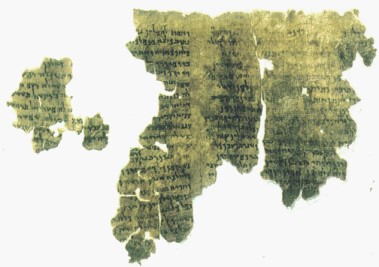Israeli archaeologists debunk the myth that the Essenes - Jewish monks from the end of the Second Temple - lived in the area and wrote the "stored scrolls"

The site that was nicknamed "the oldest monastery in the Western world" was nothing more than an ordinary settlement, according to Israeli archaeologists who have excavated in recent years in the Qumran ruins, located northwest of the Dead Sea.
Qumran is known throughout the world as the seat of the authors of the Dead Sea Scrolls, members of the Essene sect. Books, studies, conferences and exhibitions described the lives and daily routine of the Essenes - a kind of Jewish monks who lived at the end of the Second Temple. Israeli archaeologists who excavated the site now claim that it is an "ordinary settlement, devoid of any uniqueness".
The findings, which will be published soon, prove, according to their claim, that the inhabitants of Qumran lived a comfortable life, far from a life of abstinence, and were not involved in writing the scrolls at all. They add their voices to a growing number of researchers who are trying to shatter the "Qumran myth". The publication of the Qumran site came about thanks to the "stored scrolls", or the Dead Sea scrolls, which were discovered in the caves next to it.
Prof. Eliezer Suknik, who purchased the first three scrolls in 1947, was the first to speculate that the scrolls were written by the Essenes. Shortly after Soknik published his hypotheses, the French monk and archaeologist Roland de Veuve determined that a group of Essenes lived in the caves around the ruins of Qumran.
DeWo, who was a researcher at the "Ecole Biblik" in Jerusalem, excavated at the Qumran site between 1956-1951. His conclusion was that the place served as a community center for the Essenes, a kind of monastery where they used to gather and write the scrolls. Archaeologist Prof. Yigal Yedin, son of Soknik and a scroll researcher himself, relied on DeWo's conclusions, and was joined by most of the researchers of the time. Over the years, the researchers began to call DeWo Weedin's theory "The Consensus".
However, the mystery surrounding DeWo's findings only increased over the years. DeWo never published the full report of the excavations in Qumran, but only preliminary and partial reports. The findings discovered in his excavations are still scattered in several warehouses, and it is possible that some of them have been lost.
Skeletons of women and children shatter the theory of abstinence

Qumran. The end of the consensus? (Photo: Agency website)
In recent years, archaeologists have begun to claim that DeWo intentionally uncovered findings that did not fit his grand theory that Essenes lived in the ruins of Qumran, and they were the ones who wrote the Dead Sea Scrolls.
One of them is Prof. Yizhar Hirschfeld from the Hebrew University. "De Vo wrote that he only found simple ceramic vessels," says Hirschfeld, "he attached great importance to the fact that he found seven mikvehs at the site. Today we know that multiple mikvahs on one site is not unusual". Hirschfeld, who in 1994 published an article challenging DeWo Weedin's view, says that the responses he received were "of believers and not of cold-tempered researchers".
Two Israeli archaeologists, Yuval Peleg and Yitzchak Magen, recently completed nearly ten seasons of excavation in the ruins of Qumran, which they conducted on behalf of the Civil Administration of Judea and Samaria (since the excavation site is beyond the Green Line). Among the findings they discovered were many jewels, imported glassware, precious stoneware, perfumes and Nabatean ceramics.
"It is impossible to say that the people who lived in Qumran were poor," says Peleg, "nor is it possible that Da-Wu did not see findings of the type we found. He just ignored what didn't suit him. There was an attempt to rape the site so that it fits the concept." Another problematic find was discovered two years ago, in the Qumran cemetery - skeletons of women and children were found there. The Essenes, according to the historians of the time, used to abstain from women and sex.
Prof. Hirschfeld says that the findings discovered in Qumran are "revolutionary and contradict everything we know about the Essenes in every aspect." However, among the supporters of the accepted view, there are those who are not excited. One of the main ones is Magen Brushi, the chief curator of the former Hall of the Book in Jerusalem, the former chief archaeologist of the Israel Museum and the man who defined Qumran as "the oldest monastery in the Western world".
Brushi says that he does not believe the reports of finding jewelry or cosmetics in Qumran. "If items were found, they are not from the site itself or they belong to the Roman garrison that was there after the destruction of the Second Temple," he claims.
According to Brushi, "Even today, 99-98% of the researchers believe that there was an Issay monastery in Qumran. A few years ago, for example, the University of Oxford published an encyclopedia about the hidden scrolls. Out of the 90 researchers who wrote there, there was not one who challenged the accepted perception." Bruschi emphasizes that until today 12 theories have tried to contradict the De-Vue Vidin theory, but despite the attempts - the De-Vue Vidin theory remains the accepted theory.
